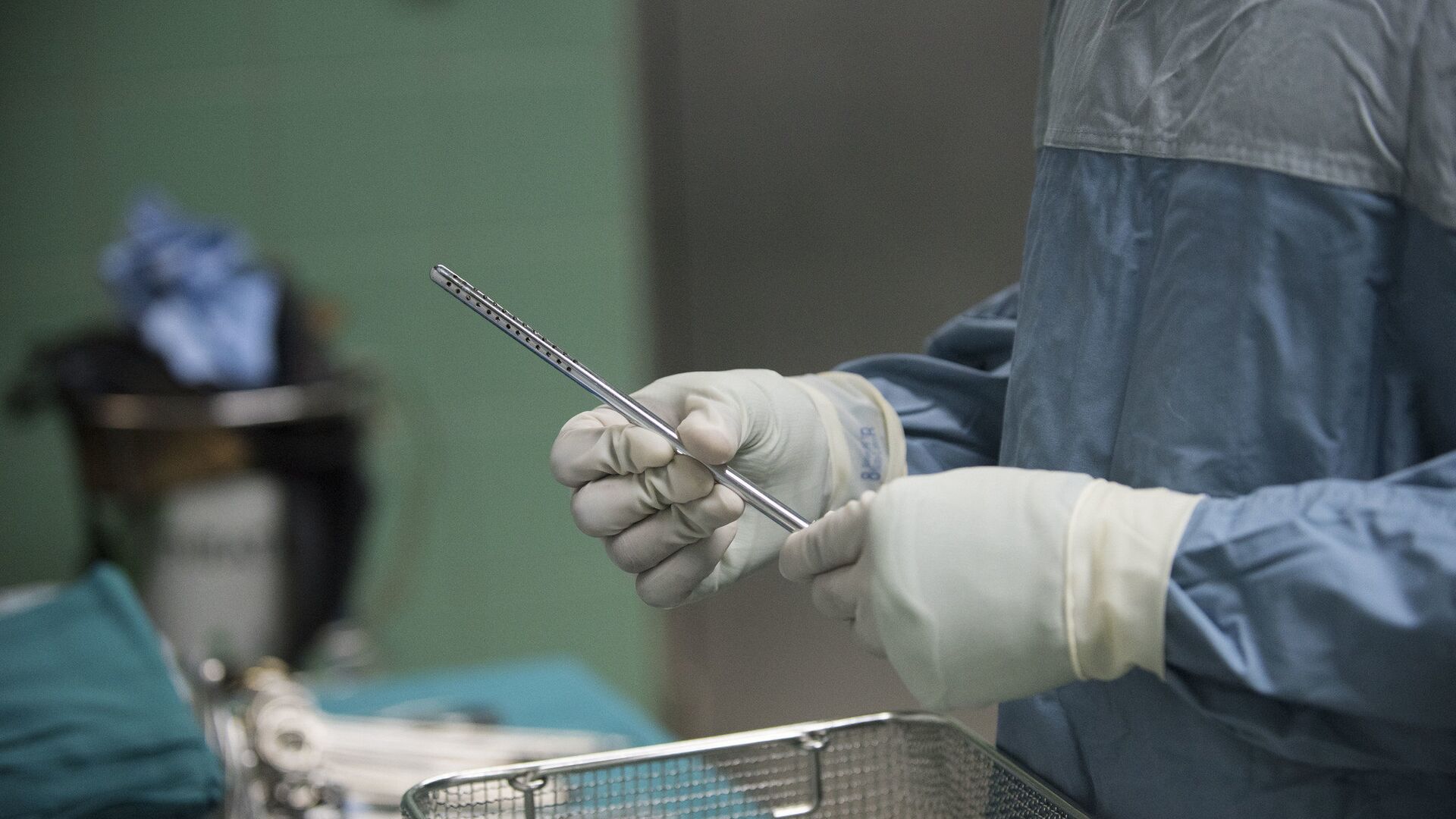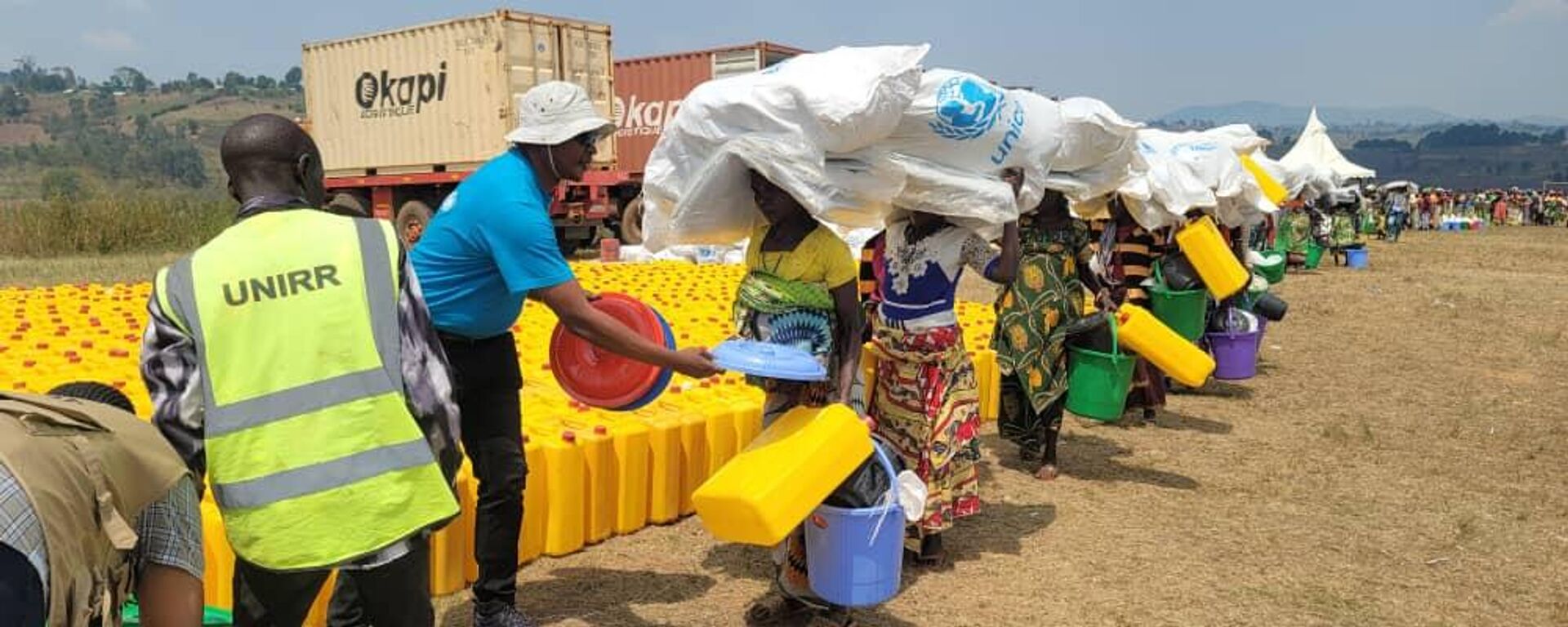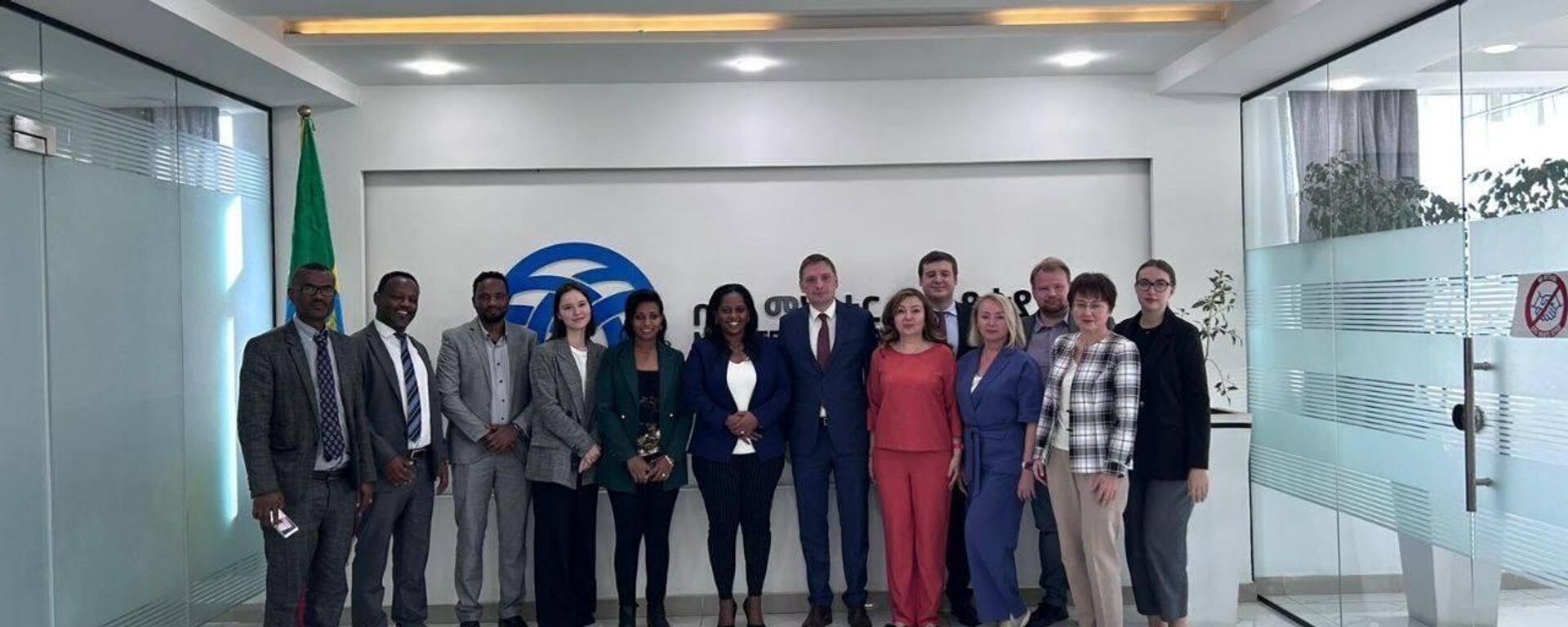https://en.sputniknews.africa/20231225/senegalese-young-man-disfigured-by-disease-recovers-face-in-russia-1064301137.html
Senegalese Young Man Disfigured by Disease Recovers Face in Russia
Senegalese Young Man Disfigured by Disease Recovers Face in Russia
Sputnik Africa
A young boy from Senegal who lost part of his cheek due to melanoma treatment has regained the ability to breathe, swallow and speak normally thanks to the... 25.12.2023, Sputnik Africa
2023-12-25T18:28+0100
2023-12-25T18:28+0100
2023-12-26T09:17+0100
sub-saharan africa
russia
senegal
west africa
health
healthcare
united states (us)
medicine
international
lifestyle
https://cdn1.img.sputniknews.africa/img/103405/96/1034059651_0:108:2048:1260_1920x0_80_0_0_e042faed66ac9c26b54d93cc10274293.jpg
Russian surgeons have reconstructed the face of 24-year-old Khadim, an albino from Senegal who had a through hole in his cheek.Today, Khadim no longer has to wear a scarf around his face to hide the wound on his cheek and from prying eyes. The hole that was there a few months ago is gone, replaced by a titanium prosthesis covered with skin. The road to a new face was a long one, Khadim's father told Sputnik Africa in an interview. The young man had to travel several thousand miles to regain his appearance, although he still has a number of surgeries to undergo.Decisive Meeting Khadim comes from a family of Senegalese farmers. He is albino, which is not uncommon in the West African country.His illness began over ten years ago with a small pimple that grew and eventually became infected, resulting in a sore on his cheek. Khadim then "toured the country" for treatment. He was finally treated in Dakar, but was prevented from returning due to COVID-19 restrictions. As his condition worsened, he was put in touch with a Russian woman, Mila, who runs a charity organization.Mila Anufrieva, founder of the Mila4Africa Foundation, has been helping children and adults in difficult situations for many years. She raises funds through social networks and sells jewelry to support the underprivileged in Africa.Khadim was eventually able to beat the melanoma, but the treatment severely damaged his face. The young man lived with a hole in his cheek and was unable to breathe or speak normally.Big Challenge of Finding a Doctor After the disease was cured, Mila began looking for specialists to rebuild Khadim's face, which proved to be very difficult.Despite the obstacles, Mila refused to throw in the towel. Her persistence paid off, and a team of surgeons from the Emergency Medical Aid Hospital in Krasnodar, a city in southern Russia, agreed to take care of Khadim. The team included more than a dozen specialists, led by Alexey Dikarev, an oncology, plastic and reconstructive surgeon, whose almost all experience is related to atypical and difficult cases like Khadim's.Unique and Complex CaseDikarev explained that it wasn't just the boy's cheek that had to be reconstructed, but the entire midface area.In addition, the nasal, buccal, and post-resection cavities were the same and open. Finally, Khadim had undergone radiation therapy, which is known to promote rejection of transplanted tissue. The doctor suspected that it was this complexity that discouraged his colleagues in other countries. First, the Russian specialists created a 3D model of the future face. They then performed four surgical procedures, the first of which took nearly 20 hours. They used a titanium prosthesis to restore the lower jaw, and three flaps of Khadim's skin to close the cavity. The recovery took three months, but it is just one step in the reconstruction of Khadim's face. He will return to Senegal with his father, but will have to come back to Russia in the spring because doctors want to take care of his teeth and eyelid.TransformationThe young man seems to be doing very well, talking and completely independent. He is obviously very talented in painting; he spends his time creating colorful pictures inspired by the nature of his continent. The father confirmed that his son is doing well. They are both very happy and grateful to the surgeons and the rest of the hospital staff for all they have done for them. Khadim admitted that once he is fully recovered, he would like to return to Russia to work and help his family.
https://en.sputniknews.africa/20230820/insecurity-pushes-children-in-dr-congo-into-worst-cholera-crisis-in-six-years-unicef-1061465634.html
https://en.sputniknews.africa/20231127/russia-to-help-ethiopia-improve-its-epidemic-preparedness-capacity-health-agency-says-1063816778.html
russia
senegal
west africa
united states (us)
Sputnik Africa
feedback@sputniknews.com
+74956456601
MIA „Rossiya Segodnya“
2023
Maxim Grishenkin
https://cdn1.img.sputniknews.africa/img/07e7/0a/17/1063018107_0:0:1104:1103_100x100_80_0_0_03090c85a11f5d2e8a19cf1d989443c9.jpg
Maxim Grishenkin
https://cdn1.img.sputniknews.africa/img/07e7/0a/17/1063018107_0:0:1104:1103_100x100_80_0_0_03090c85a11f5d2e8a19cf1d989443c9.jpg
News
en_EN
Sputnik Africa
feedback@sputniknews.com
+74956456601
MIA „Rossiya Segodnya“
Sputnik Africa
feedback@sputniknews.com
+74956456601
MIA „Rossiya Segodnya“
Maxim Grishenkin
https://cdn1.img.sputniknews.africa/img/07e7/0a/17/1063018107_0:0:1104:1103_100x100_80_0_0_03090c85a11f5d2e8a19cf1d989443c9.jpg
russia, senegal, west africa, health, healthcare, united states (us), medicine, international, lifestyle, africa in details
russia, senegal, west africa, health, healthcare, united states (us), medicine, international, lifestyle, africa in details
Senegalese Young Man Disfigured by Disease Recovers Face in Russia
18:28 25.12.2023 (Updated: 09:17 26.12.2023) Longread
A young boy from Senegal who lost part of his cheek due to melanoma treatment has regained the ability to breathe, swallow and speak normally thanks to the intervention of Russian doctors. He told Sputnik Africa the story of his treatment.
Russian surgeons have reconstructed the face of 24-year-old Khadim, an albino from Senegal who had a through hole in his cheek.
Today, Khadim no longer has to wear a scarf around his face to hide the wound on his cheek and from prying eyes. The hole that was there a few months ago is gone, replaced by a titanium prosthesis covered with skin.
The road to a new face was a long one, Khadim's father told Sputnik Africa in an interview. The young man had to travel several thousand miles to regain his appearance, although he still has a number of surgeries to undergo.
Khadim comes from a family of Senegalese farmers. He is albino, which is
not uncommon in the West African country.
His illness began over ten years ago with a small pimple that grew and eventually became infected, resulting in a sore on his cheek. Khadim then "toured the country" for treatment. He was finally treated in Dakar, but was prevented from returning due to COVID-19 restrictions.
As his condition worsened, he was put in touch with a Russian woman, Mila, who runs a charity organization.
Mila Anufrieva, founder of the Mila4Africa Foundation, has been
helping children and adults in difficult situations for many years. She raises funds through social networks and sells jewelry to support the underprivileged in Africa.
"Mila did everything, put her assets, money, time and everything to help," Khadim's father, who also traveled to Russia to be by his son's side during the treatment, told Sputnik Africa in an interview.
Khadim was eventually able to beat the melanoma, but the treatment severely damaged his face. The young man lived with a hole in his cheek and was unable to breathe or speak normally.
Big Challenge of Finding a Doctor
After the disease was cured, Mila began looking for specialists to rebuild Khadim's face, which proved to be very difficult.
"We had trouble finding doctors to perform the surgery. We contacted doctors in the United States, wrote to them, but got no response. Then we turned to Turkey [...], they promised to help us, but they gave us an estimated price of 200,000 euros. I said that it was impossible, that we'd never be able to raise that kind of money," Anufrieva recalled.
Despite the obstacles, Mila refused to throw in the towel. Her persistence paid off, and a team of surgeons from the Emergency Medical Aid Hospital in Krasnodar, a city in southern Russia, agreed
to take care of Khadim. The team included more than a dozen specialists, led by Alexey Dikarev, an oncology, plastic and reconstructive surgeon, whose almost all experience is related to atypical and difficult cases like Khadim's.
Dikarev explained that it wasn't just the boy's cheek that had to be reconstructed, but the entire midface area.
"We restored this area [...] by compensating for the absence of a large amount of tissue, mucosa, supporting tissue, i.e. the facial skeleton and skin," he said.
In addition, the nasal, buccal, and post-resection cavities were the same and open. Finally, Khadim had undergone radiation therapy, which is known to promote rejection of transplanted tissue.
The doctor suspected that it was this complexity that
discouraged his colleagues in other countries.
First, the Russian specialists created a 3D model of the future face. They then performed four surgical procedures, the first of which took nearly 20 hours. They used a titanium prosthesis to restore the lower jaw, and three flaps of Khadim's skin to close the cavity.
As a result, a cheek took the place of the gaping hole. Today, Khadim can swallow, breathe and speak normally.
The recovery took three months, but it is just one step in the reconstruction of Khadim's face. He will return to Senegal with his father, but will have to come back to Russia in the spring because doctors want to take care of his teeth and eyelid.
The young man seems to be doing very well, talking and completely independent. He is obviously very talented in painting; he spends his time creating colorful pictures inspired by the nature of his continent.
The father confirmed that his son is doing well. They are both very happy and grateful to the surgeons and the rest of the hospital staff for all they have done for them.
Khadim admitted that once he is fully recovered, he would like to
return to Russia to work and help his family.




